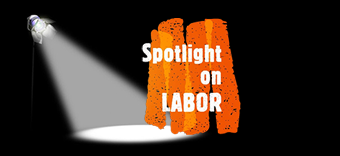Taft-Hartley: The Law That Made Union-Busting ‘Official’ Policy
Very few people are still around who remember the year 1947 when the US labor movement represented one out three American workers. It came after a decade in the thirties when union organizing hit its peak with the formation of the Congress of Industrial Organizations (CIO). The CIO provided the militant push that organized the millions of workers in the mass industries – workers who had been ignored by the AFL’s concentration only on skilled craft workers.
And all workers, from skilled to unskilled in one union, provided the worker unity that sustained sit-down strikes in Flint, Michigan, that unionized General Motors and built the United Auto Workers (UAW), strikes in the giant electrical industry that unionized General Electric and Westinghouse and built the United Electrical, Radio and Machine Workers Union (UE), and strikes in the steel industry that unionized US Steel and built the United Steelworkers union (USW). Labor was flexing its muscles as it entered the post-World War II years and began to take action to improve wages and working conditions of millions of workers.
But the giant companies would have it no longer. Sparked by the developing cold war abroad and the beginnings of the shameful McCarthy era at home, Republicans began a counterattack. Well financed by big money and pushing the growing anti-communist scare, they gained control of Congress in 1946. A year later, they enacted what became the centerpiece of the attack on labor with the passage of the Taft-Hartley Act, overriding he veto by President Harry Truman. The act, passed mainly by Republicans but with the support of a substantial number of Democrats, was the opening gun in the war against unions that has continued to this day and was accelerated after the election of Ronald Reagan in 1980. It was the beginning of the policy that revived union-busting as the norm among America’s corporations.
What was the Taft-Hartley Act and how did it provide the fertile ground for the decline of the union movement? For a detailed description of the role this law played in the decline of the union movement over the past 75 years, we highly recommend you click on this link to an article in the June 23 issue of UE News, organ of the United Electrical Workers. It conveys some great lessons for working people today who are fighting to organize unions and rebuild a movement for a more fair and just America.
UE News. 6/23


